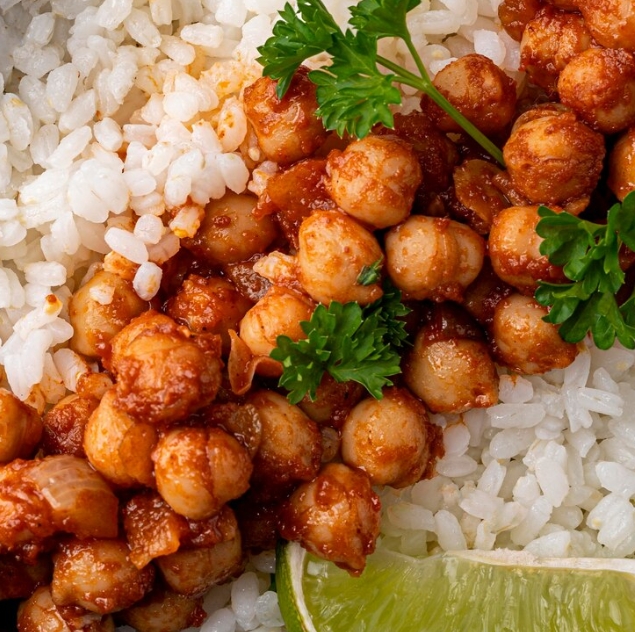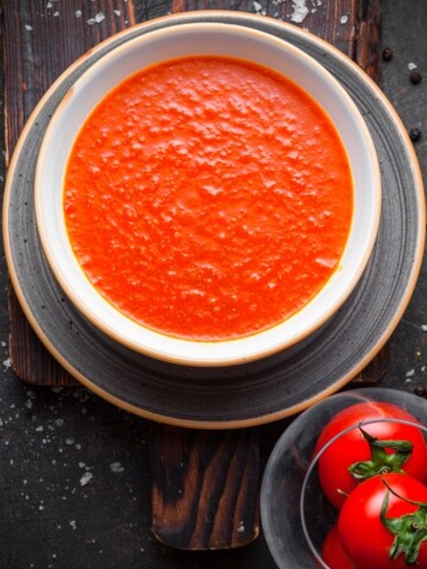Note
- To save time, you can use canned chickpeas instead of dried ones.
- Adjust the spice levels based on your preference; omit red chili powder for a milder version.
- Serve with a squeeze of lemon juice for an added burst of freshness.
Journey of Chana Masala
One of the gems of Indian cooking is chana masala, or chickpea curry, which is cherished for its robust tastes and endearing simplicity. Because of its vivid flavor and adaptability, this meal has spread far beyond its country of origin and into kitchens all around the world. However, what is the origin of this well-loved delicacy and what makes it so unique? Let's examine Chana Masala's intriguing journey.
Historical Context: The Origins of Chana Masala
The origins of Chana Masala can be found in North India, where chana, or chickpeas, have long been a mainstay of the diet. One of the first legumes to be domesticated, chickpeas were first grown 7,500 years ago in the Middle East and the Indian subcontinent. The spice combinations and cooking methods that characterized dishes like Chana Masala grew along with trade routes.
When Persian and Indian cooking techniques merged during the Mughal era, the rich spices that are essential to Chana Masala—cumin, coriander, turmeric, and garam masala—became well-known. The end product was a dish that combined exotic spices with regional foods, such as chickpeas, to produce a harmonious blend of flavors. Because of its low cost and high nutritious content, Chana Masala was once a mainstay in rural areas but soon became well-liked by people from many walks of life.
Key Ingredient Significance: Why Chickpeas Matter
The main ingredient in Chana Masala, chickpeas have a purpose beyond flavor. They are an excellent option for vegetarian diets since they are a nutritional powerhouse that offers necessary vitamins, fiber, and protein. Additionally, the dish can highlight the rich and diverse spice character because chickpeas have a neutral flavor that absorbs spices wonderfully.
To bring out its creamy texture, dried chickpeas are cooked to perfection after being soaked overnight in traditional Indian homes. They are the ideal foundation for many other recipes because of their versatility, but Chana Masala is where they really come into their own.
Modern Appeal: A Dish for All Seasons
In addition to being loved in Indian homes, chana masala is now a staple in vegan and vegetarian kitchens all over the world. Because of its adaptability, it can be served with rice, naan, or even quinoa, following current dietary trends. In the West, where its robust flavors and substantial texture appeal to a wide range of palates, Chana Masala has made its way into menus at restaurants, food trucks, and even meal-prep kits.
Chana Masala is beautiful because it strikes a balance between accessibility and depth. A new cook may find the spices frightening, but the cooking itself is simple. This meal encourages experimenting; some people mix the base for a smoother texture, while others add coconut milk for creaminess. Whatever the variation, Chana Masala is always the same: a hearty, tasty curry that feeds the body and the spirit.
Fun Facts: Did You Know?
Archaeological evidence suggests that chickpeas have been farmed since 7,500 BCE, making them one of the oldest crops.
Translating to "spice blend," "masala" is a key ingredient in Indian cookery that differs depending on the location.
A common street meal in India is chana masala, which is frequently served with bhature, or deep-fried bread, as part of a morning or brunch dish known as "Chole Bhature."
This dish is a popular option for people with dietary requirements because it is naturally gluten-free and vegan.
Thank You for Reading
More than just a dish, chana masala is a link to tradition, culture, and history. This meal highlights the power of Indian spices while honoring the underappreciated chickpea. Chana Masala is a recipe that always makes you feel happy and comfortable, whether you're making it for the first time or revisiting a favorite classic.
I appreciate you coming along on this delicious trip into the core of Indian cooking. I hope the warmth of delicious meals and the perfume of spices flood your kitchen. Savor every bite and have fun while cooking!






